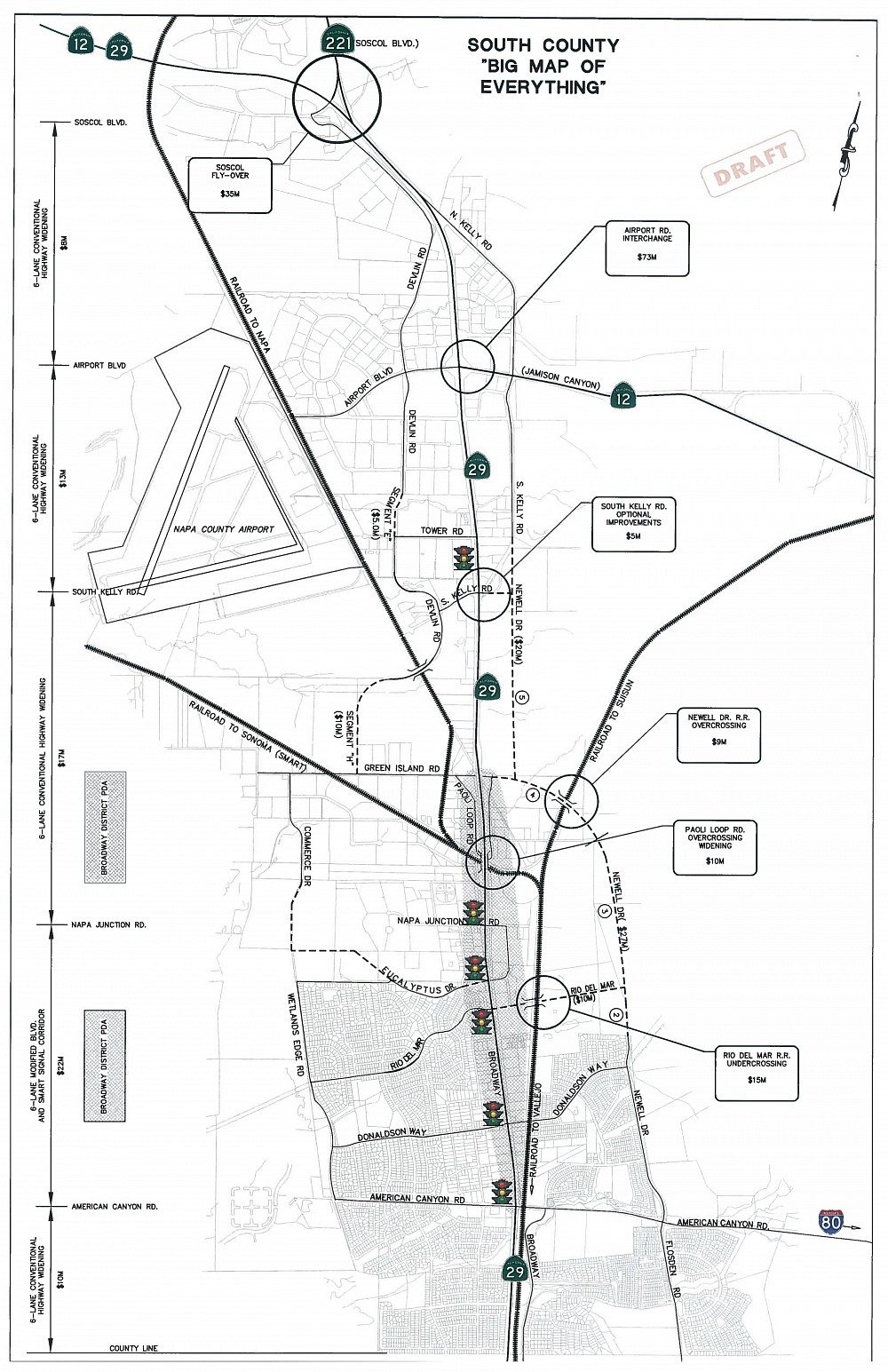
Everyone talks about the traffic...
on the web at: https://sodacanyonroad.org/forum.php?p=1537
Bill Hocker | May 26, 2022Update 5/26/22
NVR 5/26/22: Napa County parallel Highway 29 route celebrated
Update 4/20/20
NVR 4/6/20: Napa creates $500 million long-range transportation list
Update 10/5/17
NVR 10/5/19: Caltrans depicts Soscol Junction as big congestion-buster
Update 7/31/17
NVR 7/31/17: Napa transportation leaders try to speed up fix to 29/221 intersection
NVR 7/25/17: South Napa County makes pitch for Highway 29 congestion relief
NVR 7/25/17: Napa transportation leaders agree, disagree with grand jury findings
7/7/17
NVR 7/7/17: Grand jury wants more done to address Napa County congestion
The Napa County Grand Jury has issued a report on the Napa Valley Transportation Agency's "Vision 2040 Plan" and it is not pleased, saying that the $250,000, 2-year effort "did not result in an actionable plan to measure and solve traffic congestion". As if the NVTA had the ability to "solve" congestion problems.
The congestion problems are simply a symptom of the amount of development taking place. As long as building projects continue to be approved in the county, bringing more workers, more deliveries and shipments and more tourists, transport infrastructure projects from trails to bus routes to light rail to freeways, which are expensive and take a very long time to complete, will never keep up with the congestion created. The solution to the congestion problem is to reduce the amount of development, unfortunately well beyond the mandate of the NVTA.
The failure of the Grand Jury report and of the CAC recommendations is that they assume that once congestion reduction measures are implemented that the congestion will be reduced. The example of the widening of Jameson Canyon to 4 lanes is instructive in this regard. As a commuter coming through the Jameson/29 intersection every weekend for the last 23 years I can testify that widening Jameson Canyon to 4 lanes not only did not relieve congestion, it has induced it to become more congested than ever. As traffic researchers know, when measures are taken to ease the flow, more development is induced by the promise that easier access is just around the corner. A vast amount of industrial development has occured in anticipation of the easier link to the central valley which filled the increased capacity even before it was operational. And now the intersection is more congested than it was before the widening.
The NTVA seems to be recognizing this paradox and in its most recent discussions is advocating not doing the proposed widening of Hwy 29 around the Jameson Canyon bottleneck. "If you build a six-lane road, traffic is going to follow," the NTVA director said. "People go where there's capacity."
In this approach they are doing the only thing they can do to relieve the congestion: insure that the congestion will become just bad enough that developers and tourists and businesses will begin going elsewhere. The alternative is that urban development will continue to consume the Napa Valley as it has the rest of the Bay Area. It is stern medicine, but necessary if the patient is to survive.
Unfortunately, without the committment from county governments to curtail development projects (the strategy that allowed the wine industry to survive in the first place), NVTA will not be able to maintain this approach for long, and the demand by those convinced that congestion can be "solved" with more infrastructure, and those who want more infrastructure to enable more development, will force the NVTA to relent. And the flood gates will be opened once again, continuing to drown the vines and open spaces of Napa County in urban sprawl.
Barry Eberling series: Traffic Tales of Napa County
Napa County Travel Behavior Study 2015 Conclusions
copyright © sodacanyonroad.org
